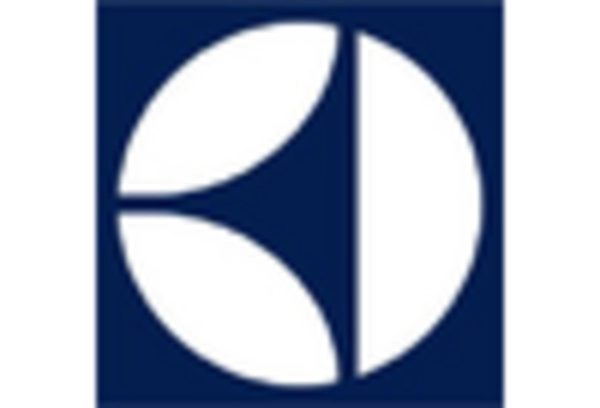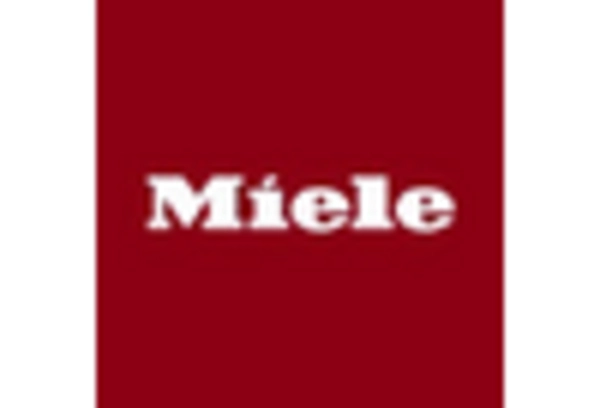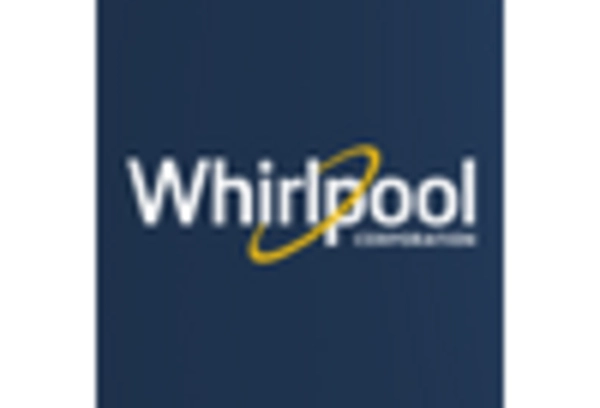Health and Safety Considerations
The Induction Hob Market is increasingly shaped by health and safety considerations among consumers. Induction cooking is perceived as a safer alternative to traditional cooking methods, as it reduces the risk of burns and kitchen fires. The surface of induction hobs remains cool to the touch, minimizing the chances of accidents, particularly in households with children. Additionally, the absence of open flames and reduced emissions contribute to a healthier cooking environment. As awareness of health and safety issues continues to rise, consumers are likely to gravitate towards induction hobs, further driving market growth. This trend indicates that manufacturers may need to emphasize these safety features in their marketing strategies.
Rising Demand for Energy Efficiency
The Induction Hob Market experiences a notable surge in demand for energy-efficient cooking solutions. As consumers become increasingly aware of energy consumption and its environmental impact, induction hobs, which utilize electromagnetic energy to heat cookware directly, are gaining traction. This technology is reported to be up to 90% efficient, compared to traditional gas and electric stoves, which typically operate at around 70% efficiency. The growing emphasis on reducing carbon footprints and energy bills is likely to drive the adoption of induction hobs. Furthermore, government initiatives promoting energy-efficient appliances may further bolster this trend, indicating a shift in consumer preferences towards sustainable cooking methods.
Shift Towards Compact Living Spaces
The Induction Hob Market is witnessing a shift towards compact living spaces, particularly in urban areas where space is at a premium. As more individuals and families opt for smaller homes or apartments, the demand for compact and multifunctional kitchen appliances is on the rise. Induction hobs, known for their space-saving designs and efficient cooking capabilities, are well-positioned to meet this demand. Market analysis indicates that the compact kitchen appliance segment is projected to grow significantly, driven by the increasing number of urban dwellers. This trend suggests that manufacturers may need to focus on developing smaller, yet powerful induction hobs to cater to this evolving consumer preference.
Government Regulations and Incentives
The Induction Hob Market is significantly impacted by government regulations and incentives aimed at promoting energy-efficient appliances. Many governments are implementing policies that encourage the adoption of induction cooking technologies through rebates, tax credits, and energy efficiency standards. These initiatives not only aim to reduce energy consumption but also to lower greenhouse gas emissions. Market data suggests that regions with stringent energy efficiency regulations are witnessing a faster adoption of induction hobs. This regulatory environment indicates that manufacturers may need to align their product offerings with these standards to remain competitive in the market. As such, government support is likely to play a pivotal role in the growth of the induction hob market.
Technological Advancements in Cooking Appliances
The Induction Hob Market is significantly influenced by ongoing technological advancements in cooking appliances. Innovations such as smart induction hobs, which integrate connectivity features and app controls, are becoming increasingly popular among tech-savvy consumers. These advancements not only enhance user convenience but also improve cooking precision and safety. For instance, features like automatic pan detection and temperature control are appealing to a broader audience. Market data suggests that the smart kitchen appliance segment is expected to grow at a compound annual growth rate of over 20% in the coming years. This trend indicates that technological integration is likely to play a crucial role in shaping the future of the induction hob market.


















Leave a Comment